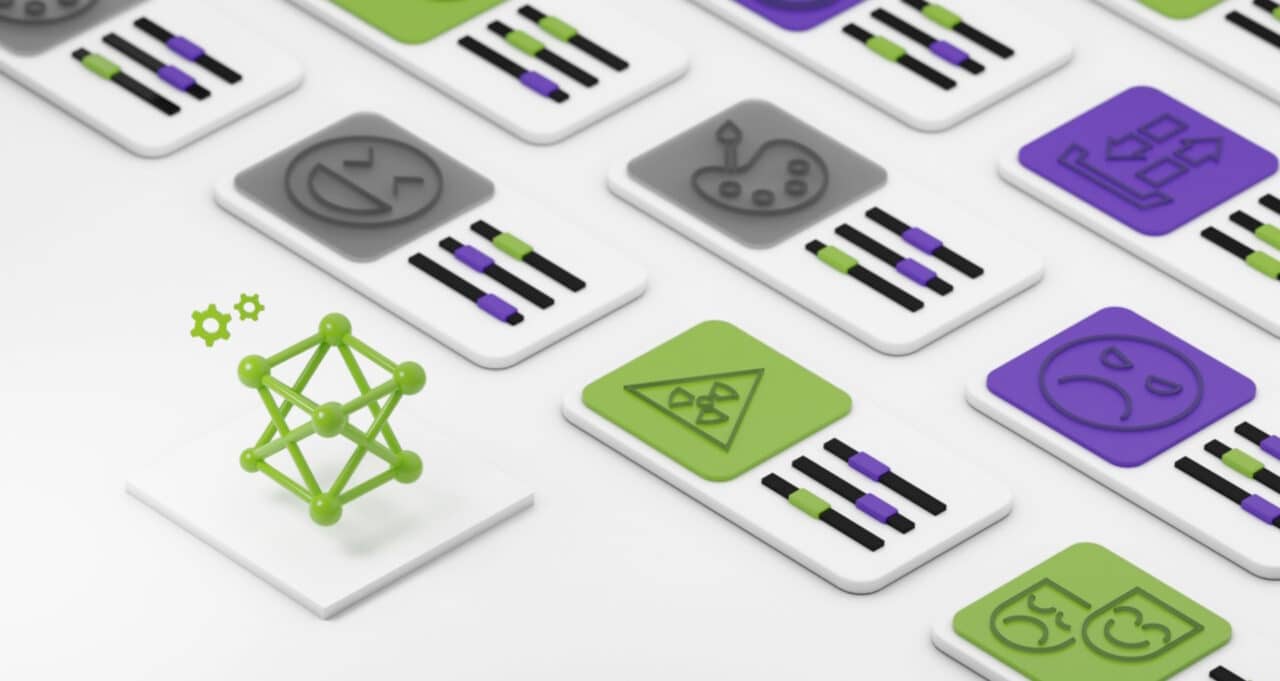Developers have a new AI-powered steering wheel to help them hug the road while they drive powerful large language models (LLMs) to their desired locations.
NVIDIA NeMo SteerLM lets companies define knobs to dial in a model’s responses as it’s running in production, a process called inference. Unlike current methods for customizing an LLM, it lets a single training run create one model that can serve dozens or even hundreds of use cases, saving time and money.
NVIDIA researchers created SteerLM to teach AI models what users care about, like road signs to follow in their particular use cases or markets. These user-defined attributes can gauge nearly anything — for example, the degree of helpfulness or humor in the model’s responses.
One Model, Many Uses
The result is a new level of flexibility.
With SteerLM, users define all the attributes they want and embed them in a single model. Then they can choose the combination they need for a given use case while the model is running.
For example, a custom model can now be tuned during inference to the unique needs of, say, an accounting, sales or engineering department or a vertical market.
The method also enables a continuous improvement cycle. Responses from a custom model can serve as data for a future training run that dials the model into new levels of usefulness.
Saving Time and Money
To date, fitting a generative AI model to the needs of a specific application has been the equivalent of rebuilding an engine’s transmission. Developers had to painstakingly label datasets, write lots of new code, adjust the hyperparameters under the hood of the neural network and retrain the model several times.
SteerLM replaces those complex, time-consuming processes with three simple steps:
- Using a basic set of prompts, responses and desired attributes, customize an AI model that predicts how those attributes will perform.
- Automatically generating a dataset using this model.
- Training the model with the dataset using standard supervised fine-tuning techniques.
Many Enterprise Use Cases
Developers can adapt SteerLM to nearly any enterprise use case that requires generating text.
With SteerLM, a company might produce a single chatbot it can tailor in real time to customers’ changing attitudes, demographics or circumstances in the many vertical markets or geographies it serves.
SteerLM also enables a single LLM to act as a flexible writing co-pilot for an entire corporation.
For example, lawyers can modify their model during inference to adopt a formal style for their legal communications. Or marketing staff can dial in a more conversational style for their audience.
Game On With SteerLM
To show the potential of SteerLM, NVIDIA demonstrated it on one of its classic applications — gaming (see the video below).
Today, some games pack dozens of non-playable characters — characters that the player can’t control — which mechanically repeat prerecorded text, regardless of the user or situation.
SteerLM makes these characters come alive, responding with more personality and emotion to players’ prompts. It’s a tool game developers can use to unlock unique new experiences for every player.
The Genesis of SteerLM
The concept behind the new method arrived unexpectedly.
“I woke up early one morning with this idea, so I jumped up and wrote it down,” recalled Yi Dong, an applied research scientist at NVIDIA who initiated the work on SteerLM.
While building a prototype, he realized a popular model-conditioning technique could also be part of the method. Once all the pieces came together and his experiment worked, the team helped articulate the method in four simple steps.
It’s the latest advance in model customization, a hot area in AI research.
“It’s a challenging field, a kind of holy grail for making AI more closely reflect a human perspective — and I love a new challenge,” said the researcher, who earned a Ph.D. in computational neuroscience at Johns Hopkins University, then worked on machine learning algorithms in finance before joining NVIDIA.
Get Hands on the Wheel
SteerLM is available as open-source software for developers to try out today. They can also get details on how to experiment with a Llama-2-13b model customized using the SteerLM method.
For users who want full enterprise security and support, SteerLM will be integrated into NVIDIA NeMo, a rich framework for building, customizing and deploying large generative AI models.
The SteerLM method works on all models supported on NeMo, including popular community-built pretrained LLMs such as Llama-2 and BLOOM.
Read a technical blog to learn more about SteerLM.
See notice regarding software product information.
Explore generative AI sessions and experiences at NVIDIA GTC, the global conference on AI and accelerated computing, running March 18-21 in San Jose, Calif., and online.
